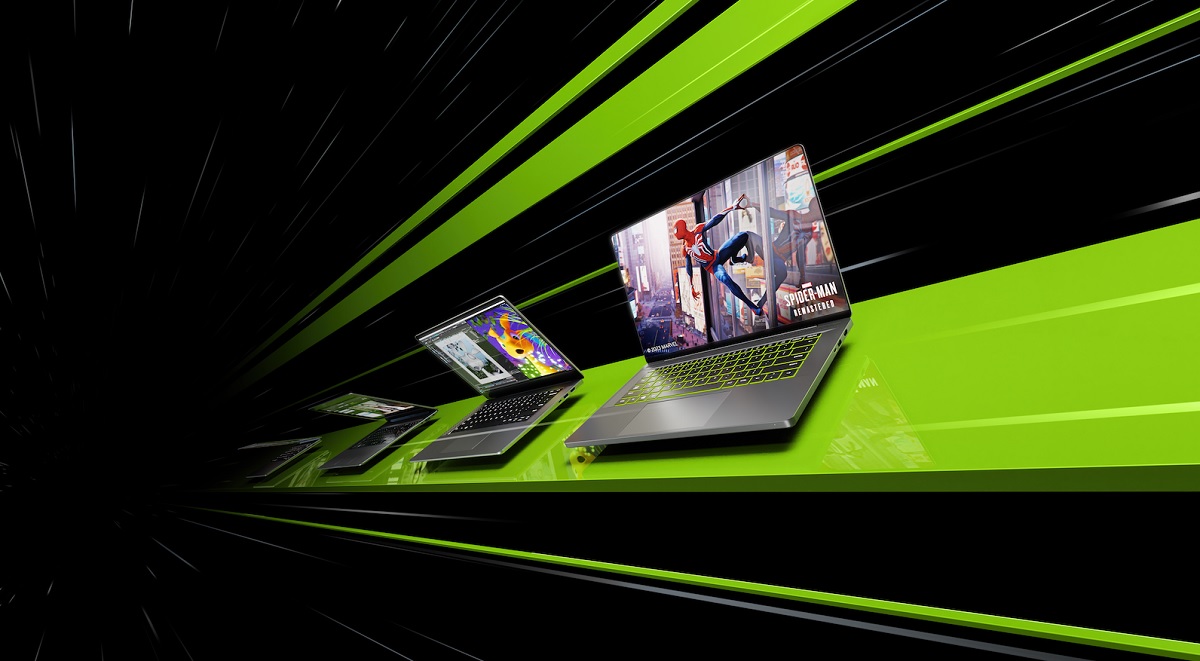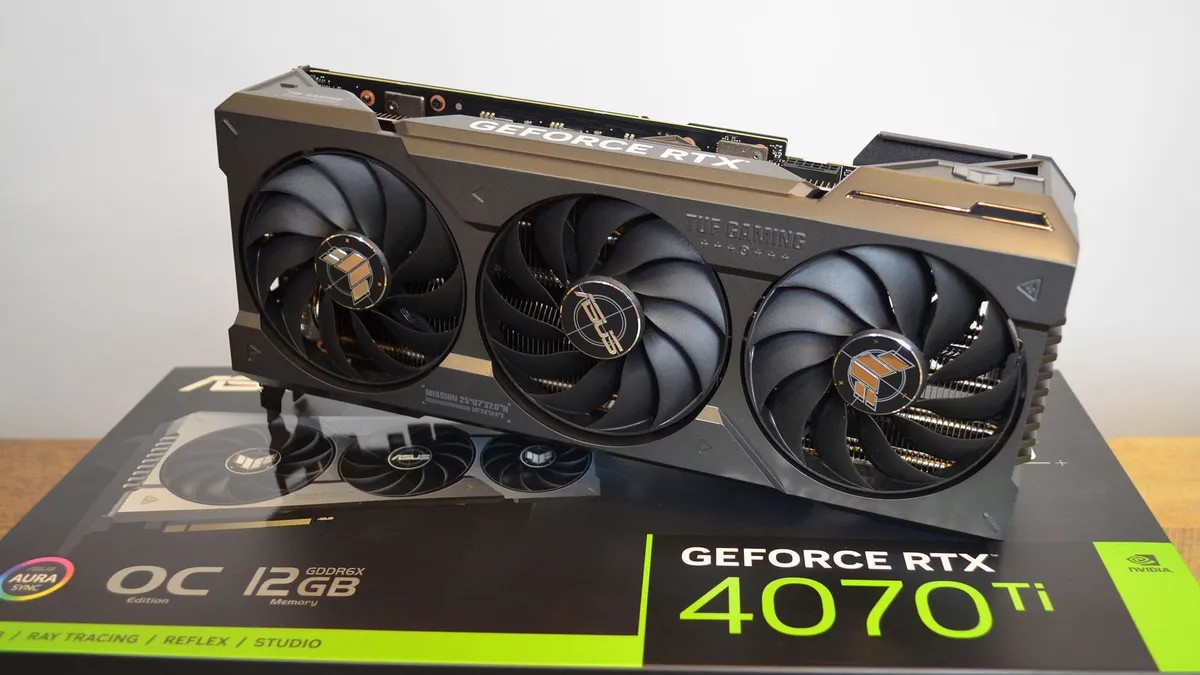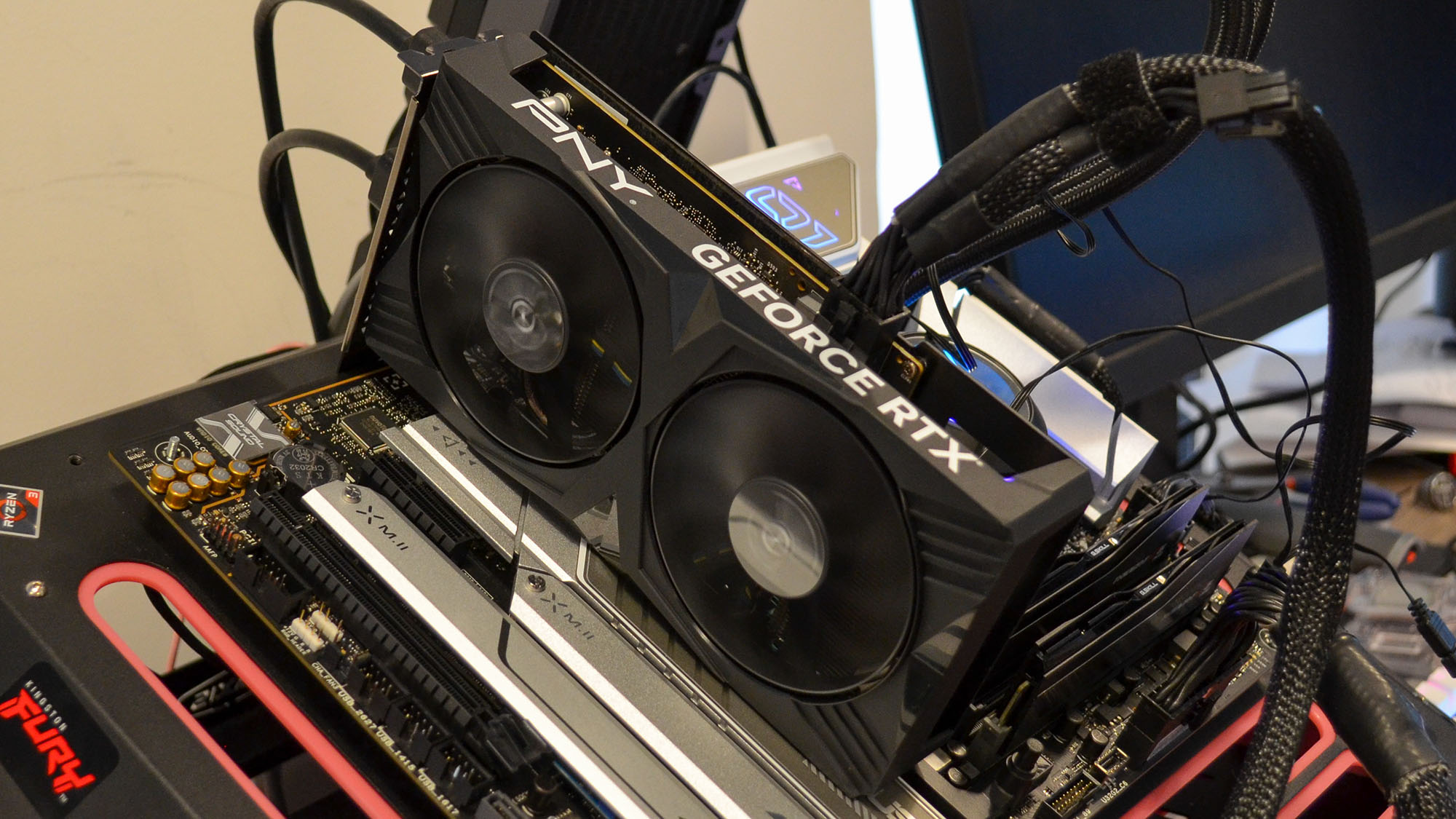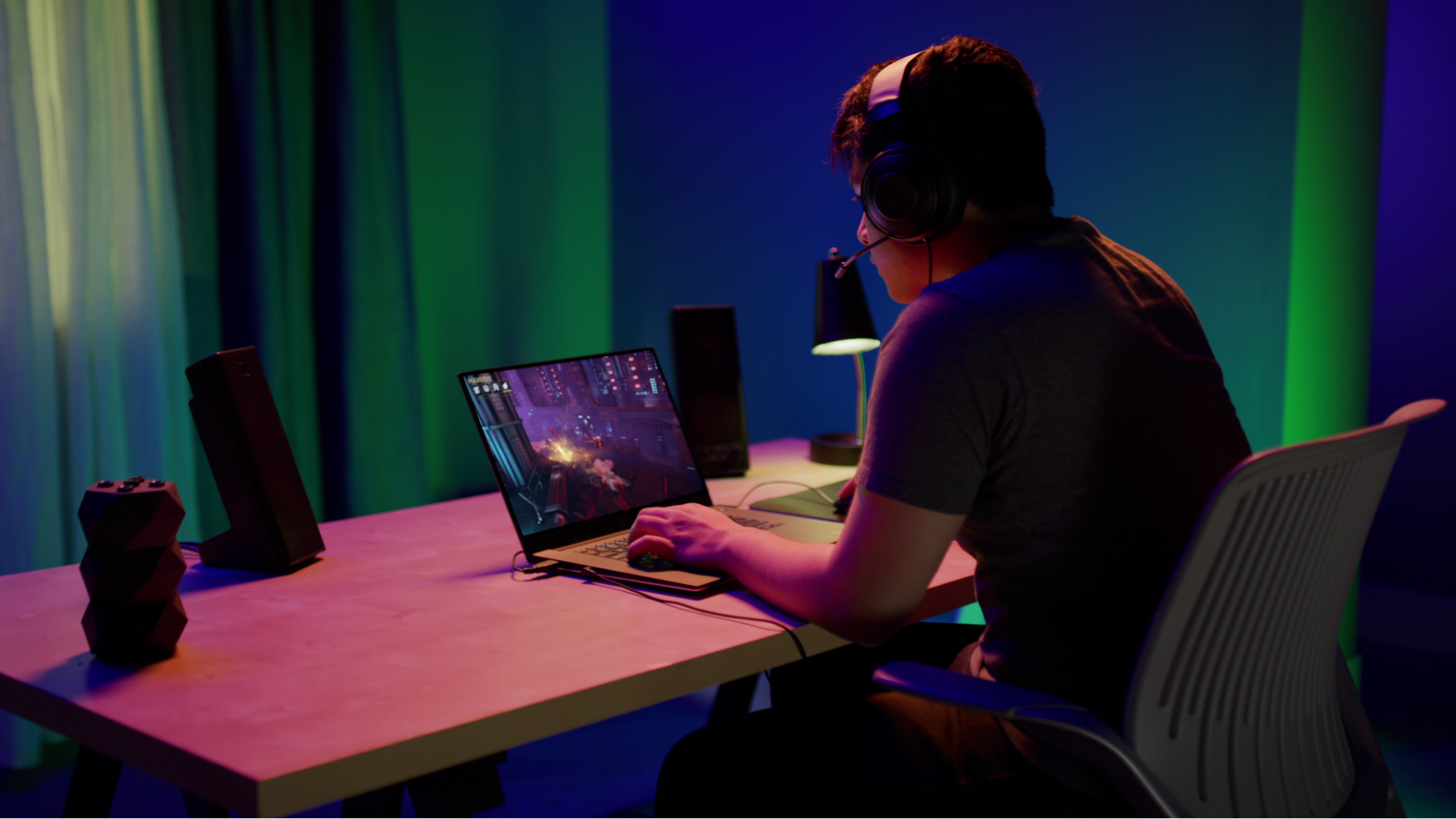Nvidia in 2023: year in review
To sum up with maximum brevity: Hopper > Lovelace

Nvidia had an interesting year to put it mildly. In more recent times, we’ve had a strange kind of love-hate relationship with Team Green, mainly because it makes great graphics cards, but then tends to also make massive dents in our bank balance if we want to, you know, actually buy them.
The pricing of Nvidia’s Lovelace GPUs was sky-high for the high-end models released last year, but what about this year? How did the company fare when more affordable RTX 4000 graphics cards were launched? Let’s dig into this, and also where Team Green made its big bucks – spoiler alert, not from you or me, or other gamers – as we evaluate Nvidia’s 2023.

Nvidia kicks off with big guns for laptops and the RTX 4070 Ti
Right at the start of the year, Nvidia was ready to pounce with a raft of Lovelace launches at CES 2023.
First of all, we got RTX 4000 GPUs for laptops, and there were a bunch of these. A full house, in fact: RTX 4050, 4060, 4070, 4080 and 4090 GPUs.
These mobile graphics cards were generally well-received, even if there were some complaints about the RTX 4090’s relative spec compared to the desktop incarnation – though it’s still an undeniably powerful laptop performer (if very pricey – no surprises there, though). And also there was the matter of the RTX 4070 mobile being perceived as something of a weak link in some quarters (with the 4080 offering a pretty sizeable step up in performance).
Secondly, Nvidia brought in a new desktop Lovelace graphics card to follow up on the RTX 4090 and 4080, the first two RTX 4000 GPUs which were launched late in 2022.

The upper-mid-range RTX 4070 Ti was revealed at CES 2023 and went on sale swiftly after the show, but there was a problem with this new graphics card. Yes, it was cheaper – and finally a more affordable Lovelace GPU, hitting shelves with an MSRP of $799 in the US (and in line with that elsewhere), compared to the RTX 4080 which was a far weightier $1,199 (a truly wallet-worrying increase in comparison to the RTX 3080).
Sign up for breaking news, reviews, opinion, top tech deals, and more.
However, the trouble with the RTX 4070 Ti was that it looked suspiciously like the canceled RTX 4080 12GB – and some were disappointed at the relatively modest upgrade compared to its predecessor. Still, it wasn’t a bad GPU as such, just not everything we hoped it would be (and the 12GB of VRAM remained a definite blot on the spec landscape).
This was only the start of the desktop GPU launches for Lovelace in 2023, though, and one particular graphics card was to make a much more impressive entrance and bigger impact on the market.

Nvidia’s RTX 4070 – the Lovelace champion
The RTX 4070 took a while to turn up after its 4070 Ti stablemate hit the shelves, but the graphics card that took the crown of the best Nvidia GPU in 2023 finally arrived in April.
We called the RTX 4070 the “ultimate 1440p gaming card” and praised its fantastic price/performance ratio, even though it did notch up the price over the RTX 3070 (by 20%), meaning it was undeniably pricey for what’s a mid-range card. Still, this GPU was such a power-packed mid-ranger that it held the top spot in our best graphics card roundup for around half a year, until AMD’s RX 7800 XT turned up in September to steal the crown.
So, while the price hike was regrettable, the value proposition was still strong, and the RTX 4070 offered performance levels that equated to the RTX 3080, or even 3080 Ti in some cases – and it was certainly more affordable than those cards.
This was, and remains, the highlight of Nvidia’s Lovelace range in our books, and a high point for Team Green in 2023.

Trio of RTX 4060 models brought some budget relief (of sorts)
From a high point, to a considerably lower one in some respects, we also witnessed the debut of RTX 4060 models this year. These were much-awaited graphics cards, given Nvidia’s lackluster performance at the budget end of the market as we discussed at length this time a year ago in our overview of Nvidia’s 2022.
The RTX 4060 Ti was the first model to pitch up in May and it was seriously disappointing with its pricing and lack of VRAM (just 8GB, combined with a narrower memory bus than its predecessor, though it made up for this in other ways to an extent). Overall – DLSS 3 and Lovelace bells and whistles aside – this initial debut was not all that much faster than the RTX 3060 Ti, and rather underwhelming, frankly.
The 8GB version was also shied away from due to the knowledge that a 16GB variant of the 4060 Ti was in the works, and it came out in July. But this spin disappointed too, with the same memory bus holding back the larger quantity of video RAM – no other upgrades were applied, aside from the VRAM doubling – and the 4060 Ti was a good deal pricier too.
The most sensible release in this bracket of Lovelace GPUs was the RTX 4060, which arrived in-between the two 4060 Ti models, landing in June. While the RTX 4060 caught a good deal of flak from gamers and reviewers alike, as we argued at the time, it’s actually a pretty solid value-for-money graphics card – if unfortunately positioned (in terms of comparisons drawn to the RTX 3060 Ti, a board that was unusually good from Nvidia’s last-gen).
The RTX 4060 also had its thunder rather stolen by AMD’s RX 7600 which took the top spot in our list of the best cheap graphics cards and held it.
All in all, the RTX 4060 family was a somewhat shaky proposition, but the RTX 4060 itself is a 1080p workhorse that shouldn’t be overlooked (even though it was, to some extent). Finally, Nvidia offered something palatable at the budget end of the market (particularly when you consider the additional benefits of DLSS 3, of course, for games that support it).

Lovelace in 2023: pricing and sales woes
An overriding factor with Nvidia’s graphics cards this year was that price tags remained pitched on the high side. As noted, there was some relief at least with the RTX 4060, but elsewhere gamers were still left with a feeling that Nvidia was determined to push the boundaries with levels of pricing, trying to extract as much profit as possible without turning off buyers completely.
This led to some pretty terrible reported sales for some of its graphics cards, like the RTX 4060 Ti (8GB), which sold poorly on its release – and the 16GB version was launched without any notice (or sending out cards to reviewers). It’s no surprise Nvidia wanted to keep that model released on the quiet, though.
The most woeful tale of graphics cards sitting on shelves gathering dust this year was the RTX 4080, though (a GPU launched last year, of course). According to rumors and anecdotal reports – though there was a good old weight of these – sales levels were truly dire for the RTX 4080 throughout 2023. Gamers either went for the RTX 4070 Ti, or pushed to save for an RTX 4090 if they wanted to go really powerful, skipping over the RTX 4080 (or so went the whispers from the grapevine).
And it makes sense that the RTX 4080 performed in a distinctly wobbly fashion, demand-wise, when you consider the strong rumors that Nvidia is going to revamp this whole space in the Lovelace line-up, scrapping the 4080 in theory and replacing it with an RTX 4080 Super. (Along with an RTX 4070 Ti Super, maybe, or plain 4070 Super, or perhaps both of these GPUs).
In other words, this heavy reworking could be read as Nvidia admitting it has made a mistake in terms of where its existing upper-mid-to-high-end GPUs are pitched, particularly the RTX 4080. Rather backing up those stories of dreadful sales figures, it must be said.
There were definite problems here, in short, for Nvidia, but we shouldn’t forget that despite these speedbumps, Team Green is still by far the dominant player in the desktop GPU market. AMD’s graphics cards did take advantage of these mentioned weaknesses, and sold better certainly according to some metrics, but it was hardly a case of Nvidia losing its GPU crown. (Team Green still holds around an 80% share of the desktop market).

Sky high AI
We can talk about GeForce graphics cards until the polygonal cows come home – in a beautiful ray-traced sunset no doubt – but this wasn’t what Nvidia was really focused on in 2023. It wasn’t gaming that was the priority for Team Green, of course, but AI – where the real cash cows were to be milked.
AI chips were the force that helped drive record revenue in Q3 2023 as Nvidia CEO Jensen Huang declared that the “era of generative AI is taking off” and Team Green joined the $1 trillion club with its market value spiralling upwards. Even the US ban on selling this silicon to China, a huge market, that kicked in from November, didn’t dampen the prospect of massive profits going forward (the money will just be raked in from other regions, we’re told). So, the importance of this growth market that Nvidia is firmly plugged into can’t be underestimated.
Why are we banging on about AI? Because it could, in theory, explain high pricing maintained on the consumer front. With the boom in AI chip sales offering such a tempting level of profits, this may have been part of the reason why Nvidia held on to higher levels of pricing for consumer GPUs (and purportedly pulled back on GeForce production mid-year). Why sell off Lovelace at anything less than a premium, when producing these GeForce graphics cards is a distant second fiddle to the money to be made in the explosive growth of AI right now?
Indeed, here at TechRadar this year we’ve even had conversations about whether regarding gaming GPUs, Nvidia might just chuck it all in down the line (maybe after RTX 5000, or 6000) and focus on AI full-stop. There are a lot of factors to consider there, mind you, not the least of which is that the big players have plans to make their own AI chips to save costs, with Microsoft being the latest tech giant to be heading down that particular avenue.

DLSS 3.5 – the best gets even better
Nvidia continued to impress with its efforts to boost frame rates with upscaling tricks, following up on the release of DLSS 3 last year with DLSS 3.5. This new version arrived in August and was made to improve ray tracing fps (frames per second) specifically, using ‘ray reconstruction’ for better image quality.
Essentially, with DLSS 3.5 turned on in ray-traced games that support it – like Cyberpunk 2077 and Alan Wake 2 – you’ll get a higher level of detail and sharpness, and faster frame rates.
This marked a major development as it helps to make ray tracing a more realistic proposition without tanking the poor old frame rate excessively, and the really exciting bit – for those who don’t have an RTX 4000 GPU – is that ray reconstruction also benefits RTX 3000 and 2000 graphics cards. Finally, some of Nvidia’s new graphics trickery has made its way to previous-gen GPUs.
On top of this, as the year rolled to an end, Nvidia announced that over 500 games (and apps) now support RTX technologies, meaning ray tracing or DLSS (or both). That’s a pretty wide-ranging level of support now.

GeForce Now also got better
In January, the top tier of the cloud gaming service was upgraded to the GeForce Now Ultimate subscription, powered by RTX 4080 GPUs and streaming at up to 240 fps, while bringing lag (ping) down considerably to make for a much smoother gameplay experience.
Furthermore, Nvidia’s streaming service got a whole lot of new games in 2023, and that included titles from Microsoft’s PC Game Pass library (a hundred of them, in fact). Along with this (and tied up with Microsoft’s acquisition) we witnessed the first appearance of Activision games on GeForce Now (since they were briefly available at launch, then vanished). A trio of Call of Duty titles pitched up in November: Modern Warfare 3, Modern Warfare 2 and Warzone.

Concluding thoughts
Nvidia had a great 2023 in a lot of ways – certainly when it came to the company coffers. Team Green joined the $1 trillion club and rode the AI wave – the hottest bandwagon in tech town in a long, long time – with considerable glee.
But while Nvidia made friends with all those big tech companies desperate for high quality, heavyweight GPUs to drive their AI advancements, the firm’s relationship with gamers remained a more torrid affair.
Okay, there’s no doubting some good things happened with PC gaming this year. Finally, we experienced some budget joy with the RTX 4060, and a sterling mid-range GPU in the RTX 4070, even if the latter was more costly than we ideally would’ve liked. But there were also disappointments, particularly with pricing on a general level, which continued to be a thorn in the side of gamers in the main, as the RTX 4060 Ti and last year’s RTX 4080 sold particularly poorly by all accounts. Not to mention that Nvidia let AMD take the budget crown with the RX 7600.
DLSS 3 remained the gift that keeps on giving – with older-generation GPUs getting some love, finally, with ray reconstruction – leaving AMD huffing and puffing to catch up with its own take on upscaling (FSR).
On balance, 2023 must go down as a good year overall for Nvidia, there can be no arguing on that score – but we can only hope for some further relief on the pricing front when it comes to the GeForce GPUs that arrive next year to complete the Lovelace line-up.
Darren is a freelancer writing news and features for TechRadar (and occasionally T3) across a broad range of computing topics including CPUs, GPUs, various other hardware, VPNs, antivirus and more. He has written about tech for the best part of three decades, and writes books in his spare time (his debut novel - 'I Know What You Did Last Supper' - was published by Hachette UK in 2013).